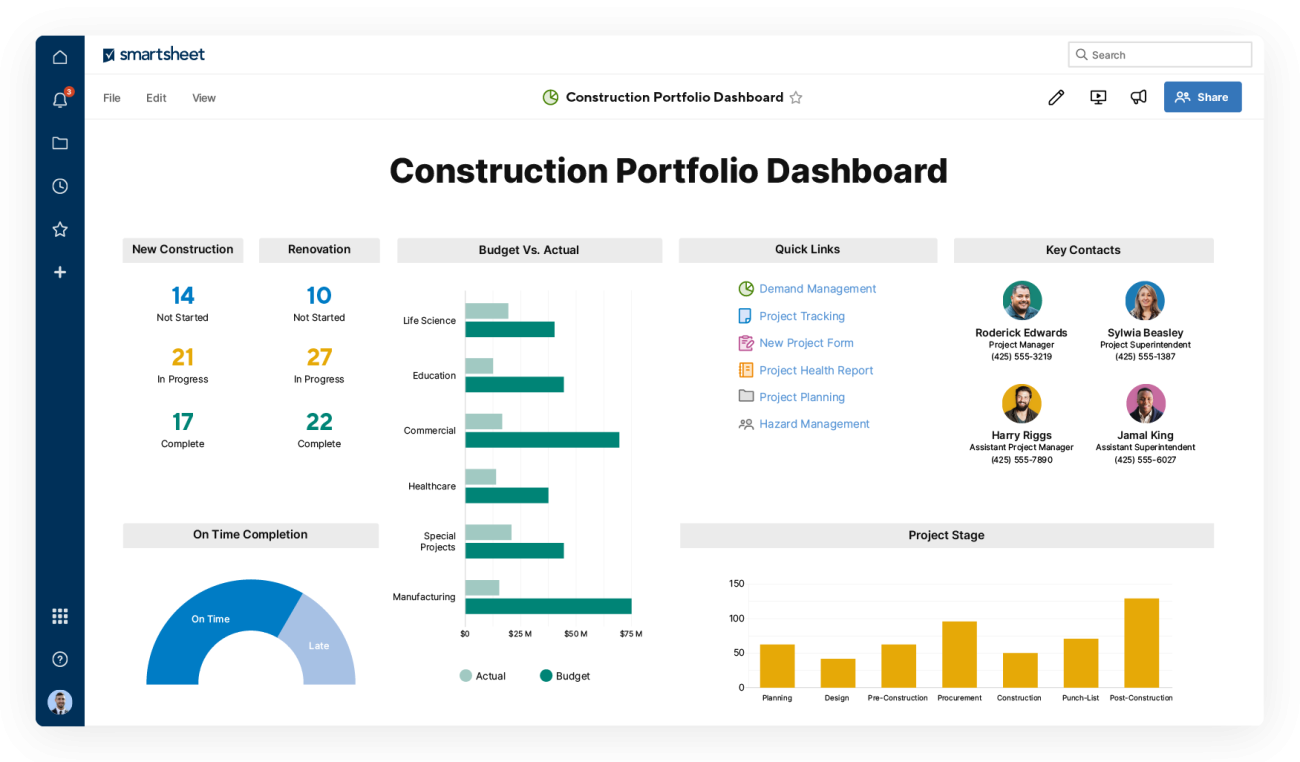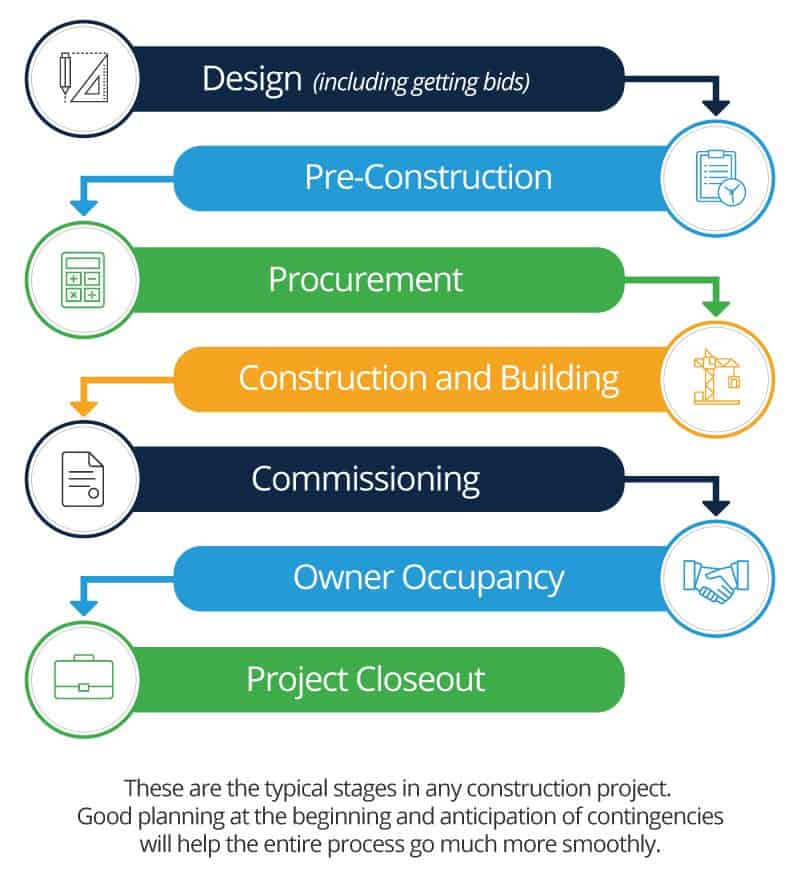What Is Construction Project Management?
Construction project management handles the planning, coordination, and execution of a construction project, whether in the agricultural, residential, commercial, institutional, industrial, civil, or environmental industries.
Construction projects typically include hundreds of tasks and multiple phases that require a deep knowledge of the building process and an ability to problem-solve to keep the project on track. Due to the complex, often shifting nature of construction projects, the role of a construction project manager is to keep the project moving according to plan.
The goal is to manage the project so that it finishes on time and on budget, while still delivering a final product that meets codes, plans, and specifications. Some of the construction project manager’s responsibilities include project management planning and cost, quality, and safety management.
To learn more about what construction project management is including the history, project management principles, and advice from the experts, check out our Construction Project Management 101 article.
Stages of Construction Project Management
Construction projects traditionally follow the Waterfall project management methodology. Although, a hybrid Waterfall-Agile method is becoming more common in order to maintain the structure of phase-based Waterfall, with the flexibility to adapt often found with Agile.
Traditionally, the construction management life cycle begins at the bidding process, but the phases of a construction project include the following:
Get started planning your construction project with the following resources:
The Role of a Project Manager in Construction Management
Although the objectives of each construction project may vary, construction project managers ultimately want to build structures that not only meet requirements and look good, but also that win more business.
Construction project managers shoulder the responsibility of keeping the project moving according to plan and may also be charged with setting the parameters, finances, and calendar, vetting and managing subcontractors and other on-site workers, resolving conflict, and more.
The Construction Management Association of America states that there are seven categories that all the responsibilities of a construction project manager fall into:
- Project management planning
- Cost management
- Time management
- Quality management
- Contract administration
- Safety management
- Construction management professional practices
Additional Resources:
- Bid Like a Winner: The Master Builder’s Guide to Construction Bidding
- Master the Art of Construction Planning to Save Time and Money
- Five Strategies of a Successful Construction Project Manager
- E-book: Are Your Construction Projects at Risk?
Importance of Communication in Construction PM
Across all types of project management, clear communication is among the most important elements. But when it comes to construction project management, communication is essential to every phase of your project, and ultimately to your success.
Sharing good news and bad news in a timely manner is equally important when preparing and implementing a build. That’s why you need to establish a flow of communication with everyone — whether in the field or in the office. This transparency will make the process smoother and reduce the number of emails and phone calls whenever issues arise.
An easy way to set up this flow of communication is by creating one location for project planning and documentation that all key stakeholders have access to. That way, if a question comes up, your team can reference the project plan, see comments and correspondence in context, and monitor status, budgets, and changes as they occur.

Additionally, be sure that teams in the field can access this single source of the truth right from the job site. Remote access will significantly reduce delays and project closeout timelines, by enabling teams to update status, submit punch list items, and attach documentation from their mobile device.
Additional Resources:
